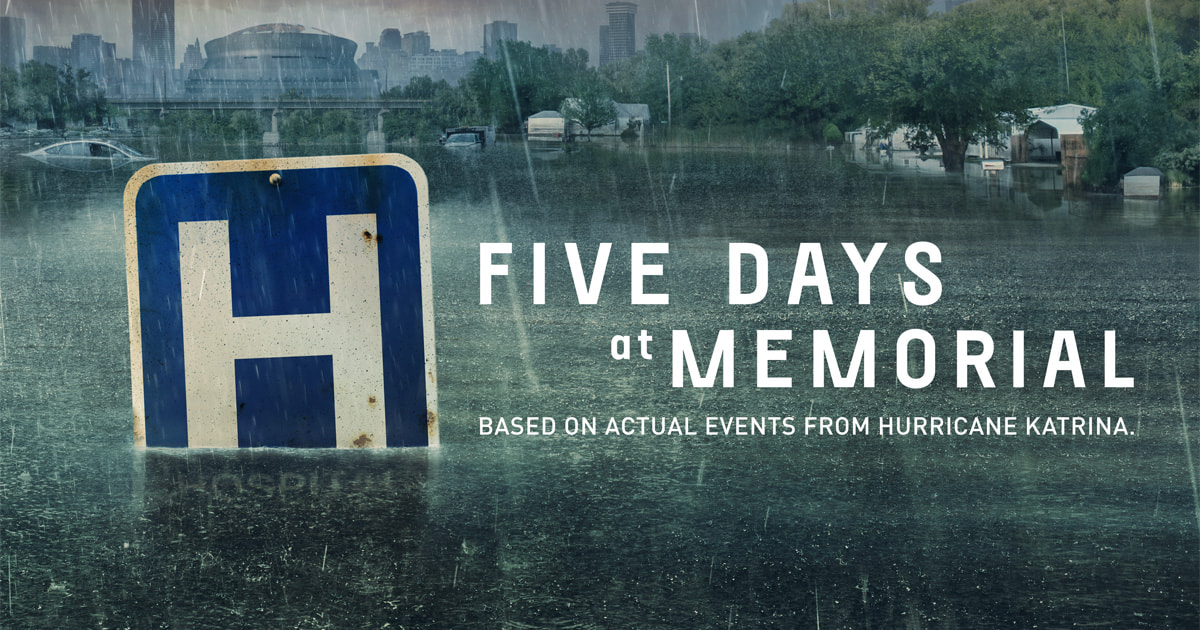It was tense and sweaty on the set of Five Days at Memorial, a new Apple TV+ exclusive series about the systemic and personal failures of a New Orleans hospital after Hurricane Katrina. It’s time to play Mafia. Free-roaming, ice-smashing RPGs, also known as Werewolves, are Cornelius Smith Jr.’s favorites. Performed by Bryant King.
He brings it up whenever the bonds are in order, and we hear that the cast members of “Memorial” would have been wilting if they hadn’t gotten together when the cameras stopped rolling. Doctors and nurses in his ICU at a New Orleans hospital struggled to care for patients when the facility lost power for five days during Hurricane Katrina.
Five Days At Memorial Cast
Vera Farmiga, as Dr. Anna Pou, a revered head and neck surgeon, was accused of administering lethal injections to patients who were too weak to survive evacuations and judged not to continue professional care.
Cornelius Smith Jr. as Bryant King According to Fink’s book, physician Bryant King vehemently disagreed when his colleagues asked him what he thought about ending patient suffering.
Cherry Jones as Susan Mulderick, a chairman of the hospital’s emergency preparedness committee, Mulderick helped draft the Memorial’s 246-page emergency plan, which unfortunately did not include a complete blackout or evacuation of the hospital if the streets were flooded.
Robert Pine plays Dr. Horace Bartz, one of Memorial’s oldest and longest-serving medical staff, and Adepero Oduye as Karen Wynn, the Memorial’s chief intensive care unit nurse and head of the ethics committee.
Five Days At Memorial Real Story

A new eight-part series explores the impact of Hurricane Katrina and its aftermath on New Orleans hospitals. The director and cast speak to RadioTimes about the true story adaptation. The eight episodes chronicle the events following a flood surge and blackout, forcing exhausted caregivers to make decisions that ultimately lead to a criminal investigation.
The drama has its roots in Sherri Fink’s 2013 non-fiction book Five Days at Memorial: Life and Death in a Storm-stricken Hospital, and according to co-creator Carlton Cuse, the author proved to be very important for the production team to adapt.
In Sherri Fink’s book Five Days at Memorial: Life and Death in a Storm-Ravaged Hospital, she describes the tragedy medical workers had to deal with when hospitals were overwhelmed in the immediate aftermath of Hurricane Katrina. It describes a difficult decision. After seeking shelter and evacuating, medical facilities and their staff were stretched to the limit as patients and victims began flooding the hospital.
Flooding and lack of disaster management failed the power grid and the death of 45 people, all patients. This miniseries details the tragic events of August 2005 and attempts to portray the mistakes and decisions made by staff and medical facilities. Hurricane Katrina took nearly 2,000 of her lives and left millions homeless.

New Orleans’ terrain is particularly vulnerable to hurricanes. As the city expanded in the 19th and 20th centuries, builders began draining the wetlands to make room for more people. However, as the water was pumped out of the city, it began to shrink and continues to shrink to this day. It has become a thing.
One of the key figures in Fink’s report is Anna Pou. Pou, played by Vera Farmiga in the miniseries, is described as “a surgeon with a strong work ethic respected by both doctors and nurses.” Fink reports that on the second day, a nurse called her Pou and looked out her window. What they saw: “Water spewing out of the sewer grate.” The deadly flood had just begun.
Farmiga also noted that the real-life person on whom the character was modeled was never directly involved in the process and that Fink’s book is ultimate “our bible.” Masters and doctors were optimistic that they had weathered the worst of the storm until they realized the flood waters were rising again.
In 2006, as CBS News reported, a nearby embankment and flood barrier were damaged by a storm, sending torrential waters over the area. Officials, including then-President George W. Bush, said no one could have predicted the floods at the time and found that agencies warned the White House of potential damage 48 hours before the storm.























